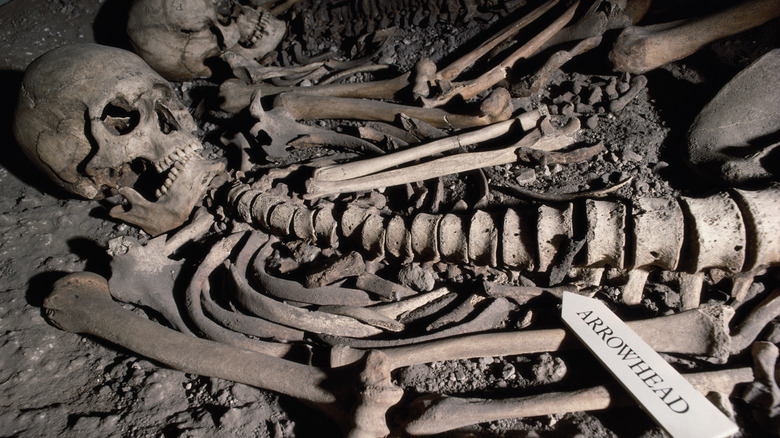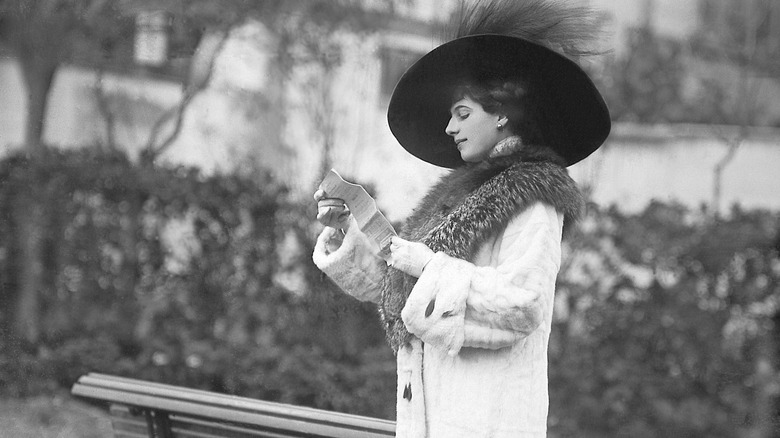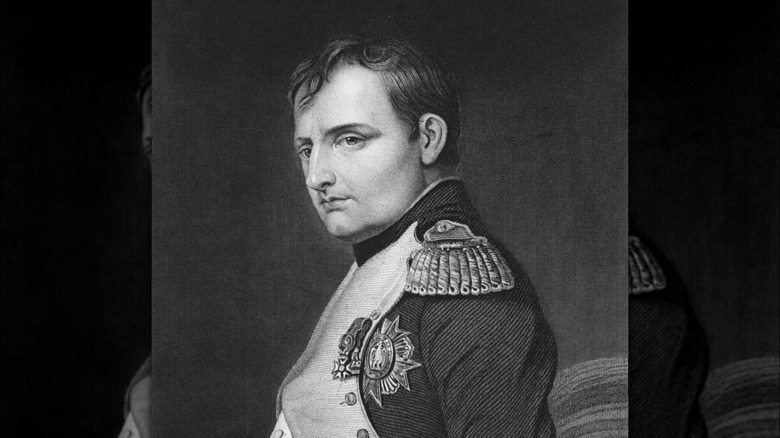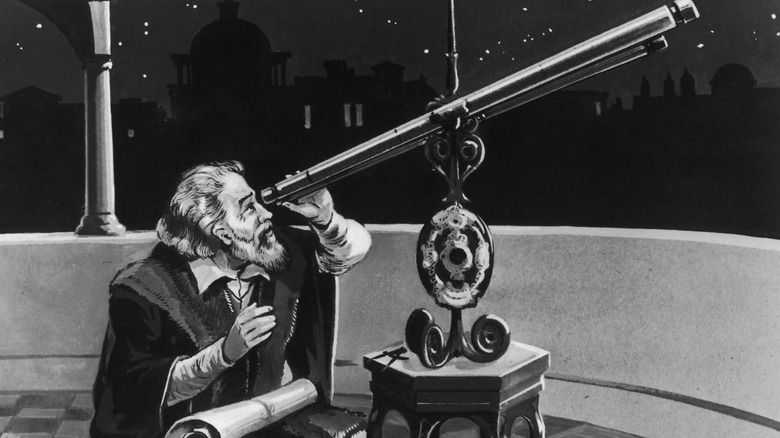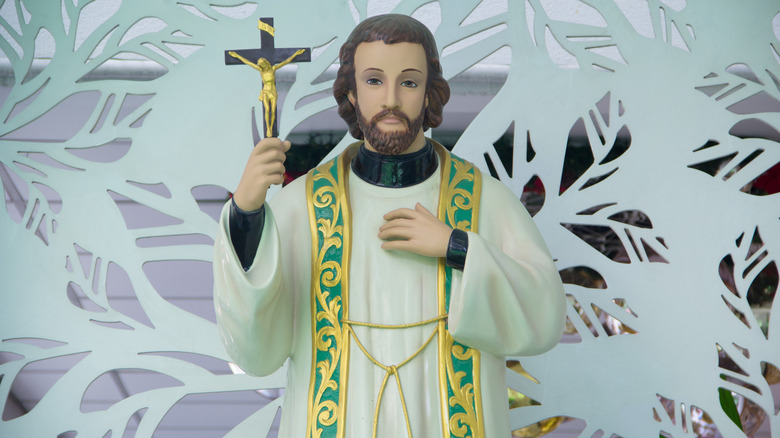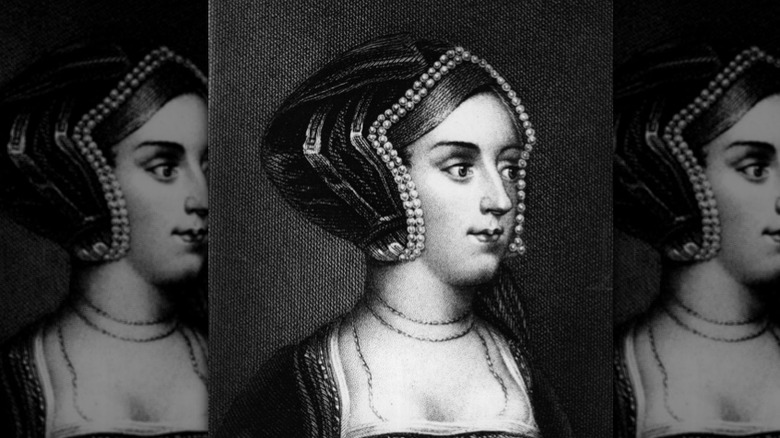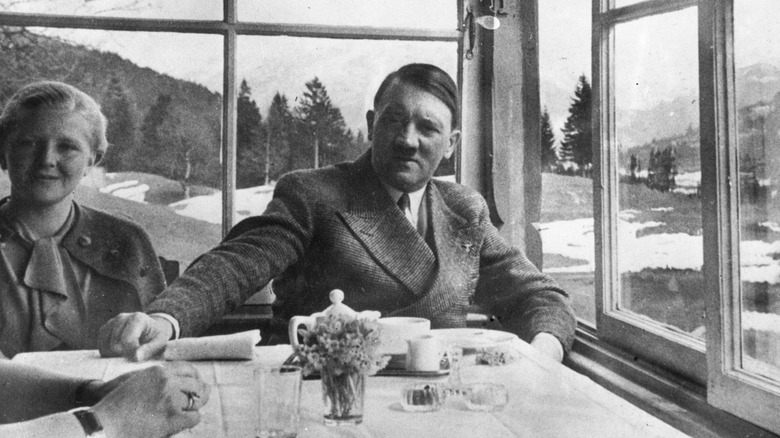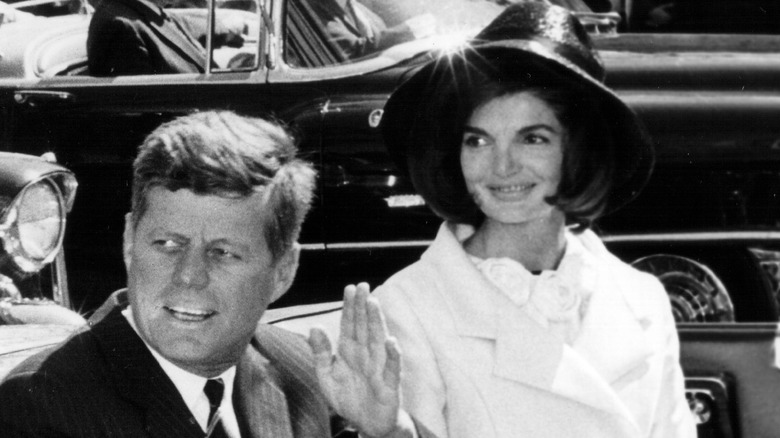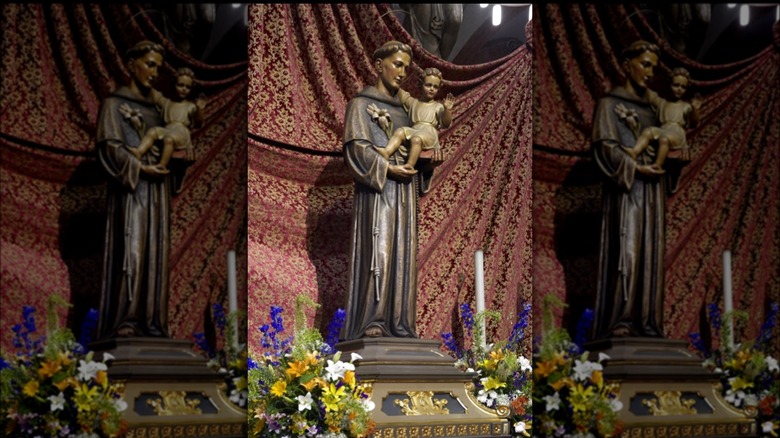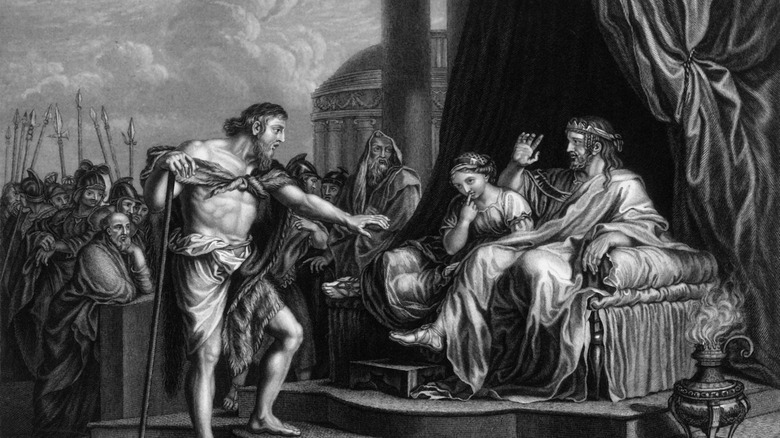Famous Historical Figures Whose Body Parts Went Missing After Death
Body parts are key to understanding the lives of the people who owned them. They can tell us about appearance, physical deformities, ailments, and cause of death. Other times, they are simply objects of morbid curiosity. So it becomes all the more interesting and mysterious when certain body parts go missing. Now in some cases, the cause of the disappearance is known. An object that is valuable or sacred — such as a relic of a saint or other religious figure, is vulnerable to destruction and vandalism by enemies of that faith or to being stolen or counterfeited. Sometimes, it is unknown whether the original was real to begin with.
In some other cases, however, body parts have been severed and disappeared for no apparent reason — even the genitalia of one famous French emperor and general. Sometimes, they are taken out during autopsies and disappear from the archives — although whether it's due to poor record-keeping or a cover-up is a matter of debate. Here are 12 famous historical figures whose body parts went missing.
Mata Hari's head
Margaretha Geertruida MacLeod, better known as Mata Hari, was a Dutch courtesan, exotic dancer, and convicted spy who allegedly worked for the Germans against France during World War I, per Britannica. According to Russell Howe's "Mata Hari, the True Story," she was shot by firing squad after spending her final night in Vincennes — the same place where the doomed King Louis XVI and his wife Marie Antoinette had spent their final hours before execution.
What happened to her body is less clear. According to Time Magazine, there were initially rumors that she had not really died — the whole execution had been faked. But as far as is known, she was indeed shot and ended up as a classroom cadaver at the University of Paris' medical school for student dissection. Apparently, no one had shown up to claim it.
Now, according to Georgetown University, her head was at some point separated from the rest of her body, preserved, and taken to the Paris Museum of Anatomy, where it allegedly remained until 2000. But that year, a museum inventory found that the head had disappeared without a trace or any update to the inventory record, suggesting that it had likely been stolen. Roger Saban, then-curator of the museum, noted that there was no way to know when the remains had been stolen and could only issue a plea for their return (via the New York Post). Her head remains missing to this day.
Napoleon's penis
Napoleon Bonaparte, French emperor and generalissimo, met a less-than-glorious end after his defeat at the Battle of Waterloo. His British opponents sent him into exile on the remote Atlantic island of St. Helena, where he died ignominiously in 1821, per Historic UK. He was originally buried in St. Helena, but according to France's Musee de l'Armee, his remains were transferred to France in 1840 on the orders of King Louis-Philippe I. Only problem? His penis was missing.
According to History, Napoleon's doctor, fellow Italian Francesco Antommarchi, cut out the emperor's organs and separated them from the body, as was traditional for the embalming of monarchs. But for whatever reason, he also allegedly cut off the emperor's penis. Per historian Tony Perrottet (via NPR), he gave the latter to a priest, who brought the organ back to Napoleon's native Corsica. The priest was then killed in one of the island's many blood feuds but still passed the souvenir down through his family. Eventually, it ended up in the hands of a British collector in 1916.
Since then, the organ has been an object of strange fascination. In 1927, it was even put on display as part of the "Relics of Napoleon" exhibition in New York City's Museum of French Art. According to The Washington Post, it ended up in the collection of urologist John Lattimer and was eventually passed down to his daughter, who still owns it today. As for the French government, it has not shown any interest in reuniting the organ with its owner, who is buried at Les Invalides in Paris.
Galileo's fingers and vertebrae
Florentine scientist and polymath Galileo Galilei is best known for building on Polish clergyman Nicolaus Copernicus' theory of heliocentrism — the idea that the Earth revolves around the sun. In the process, he got into a number of fights with churchmen, which escalated into a papal condemnation (via CERC).
Galileo died in 1642, and according to Florence's Basilica of Santa Croce, he was buried in the church's Novitiate Chapel — a small, easily missed side chapel — without much fanfare. But in 1737, his admirers decided he needed a more majestic tomb worthy of his greatness. With the help of Florentine Duke Gian Gastone de' Medici, admirers moved his body to the church's north aisle, across from the burial place of famous sculptor Michelangelo Buonarotti. Despite clerical objections, he got a monument, which remains there to this day.
But as the body was being moved, someone removed two of his fingers, one thumb, some vertebrae, and a tooth. The vertebrae ended up at the University of Padua, while the rest were passed down in one family until the early 20th century, per The Guardian. At that point, they disappeared. So what happened? Per CNN, they disappeared in 1905 and resurfaced at an auction sometime in the 20th or early 21st century. As the story goes, the description of the items, which were kept in a jar, was lost. The auctioneers had no idea of the treasure they possessed. But someone who knew his history bought them and brought them back to Florence's Museum of the History of Science, which has held onto them to this day.
St. Francis Xavier's various body parts
According to Catholic Online, St. Francis Xavier was born in 1506 in Navarra, which is today part of Spain. In 1542, he became part of a Jesuit mission to minister in the Portuguese overseas colony of Goa, India. There, he ministered to locals and Portuguese settlers alike — many of whom were former prisoners — and caused plenty of problems for the colonial authorities. He would go on to preach in today's Malaysia and make the first Roman Catholic convert in Japan — a man named Anjiro.
According to the Canadian Broadcasting Corporation, St. Francis died before heading on a trip to China. He was buried in a casket and taken to Goa. There, something bizarre happened. Two months after his burial, his body was still intact, despite being covered in lime to dissolve the flesh — a sign of sainthood. This miracle led to his body being exhibited in Goa in 1554, where a Portuguese noblewoman named Dona Isabel Carom bit off his toe and took it as a souvenir. It eventually surfaced in Lisbon in 2009 when her descendants made it public.
According to the Times of India, most of his body remains in the Basilica of Bom Jesus in Goa. But demand for his relics by various branches of the Jesuit order across the world spurred further dispersal of the saint's body parts. In 1614, his right arm was sent off in pieces to Rome, Malaysia, and Macau. One of his hands ended up in Japan. Not ideal, but at least he can be venerated all over the world.
Anne Boleyn's heart
According to the Historic Royal Places, Anne Boleyn was the second wife of Henry VIII following his bitter battle for a divorce from Catherine of Aragon. She is credited with turning Henry towards Protestantism as a way of obtaining a divorce from Catherine without needing the pope's approval. But after two miscarriages and charges of adultery, she fell out of favor and was executed in 1536.
Anne was buried in the Chapel Royal of St. Peter ad Vincula near the Tower of London. But according to the East Anglian Daily Times, there is a country estate called Erwarton Hall that Anne Boleyn was said to frequent when visiting her aunt and uncle. Legend has it that after her execution, her heart was separated from her body and sent in a small heart-shaped casket to Erwarton to be buried in the crypt. In 1837, this heart-shaped casket resurfaced and was buried with a plaque claiming that it belonged to the dead queen.
Now, there is no hard evidence to support Boleyn's heart in Erwarton — it is based on legend and faith. But it's a nice story either way. It isn't the only legend of a transfer of Boleyn's remains, either. A legend recorded in the 1840s claimed that Anne's whole body had been transferred from London to her ancestral home near the village of Salle (via the East Anglian Daily Times). Obviously, they can't both be true, but with no way to prove either, her heart is either in the Tower of London or missing. Unless someone can ask her ghost, who allegedly haunts Salle every May 19.
Adolf Hitler's jawbone
Adolf Hitler is famously known as Germany's chancellor and dictator between 1933 and 1945. According to USA Today, he shot himself along with his wife, Eva Braun. German officials then burnt the bodies lest they fell into the hands of invading Soviet soldiers who were besieging Berlin. But bone survives cremation. Some of Hitler's remains were taken and hidden away so Soviet dictator Joseph Stalin could claim that Hitler had escaped (the origin of that conspiracy theory). But according to CNN, part of his jaw and skull also survived and were hidden away until 1970.
The remains were kept in the Red Army's Magdeburg garrison in old East Germany until the USSR turned it over to local authorities. Hitler's remains were destroyed, unbeknownst to the world, with the exception of one jawbone and skull fragment, which disappeared into the USSR. It remained in the FSB archives until Russia admitted to possessing the fragments, which, in 2009, were considered the only surviving fragments of Hitler's body.
Among the surviving fragments were also some of Hitler's teeth. According to USA Today, Russia finally allowed scientists to study them and publish the results in 2018. At the end of the day, the teeth, which were not the best, were matched to descriptions provided by Hitler's dentist, who noted that Hitler was a vegetarian. With no meat on the teeth, the scientists concluded that they were likely genuine and that the German dictator had indeed died in 1945.
Marilyn Monroe's kidneys, stomach, and intestines
Marilyn Monroe, one of the world's most iconic sex symbols, died unexpectedly — and to some, suspiciously — in 1962. According to The San Diego Union-Tribune, there were numerous theories suggesting everything from connections to American intelligence and knowledge of government secrets to a sexual relationship with President John F. Kennedy.
John Miner, the LA County prosecutor in charge of overseeing the case, wrote his own account of the autopsy in the Los Angeles Times. As was standard practice, he and his partner Dr. Thomas Noguchi removed her internal organs — in particular her stomach — and took a series of smears to submit to a lab for analysis. When the samples were sent to a lab, they inexplicably disappeared, but they still were able to test her blood. Thus, Miner concluded that Monroe had in fact been murdered with a lethal dose of Nembutal — something that she could only have been administered to her via enema. Miner reported that she had no needle marks, meaning injection was not possible. Noguchi later admitted that the missing body parts were destroyed. As to what end? Nobody knows.
Geronimo's Skull
Geronimo was an Apache leader and medicine man best known for his dogged resistance to American and Mexican encroachment on his tribe's territory. According to History, he died in 1909 in Fort Sill, Oklahoma, after 14 years in confinement. He is buried in the Beef Creek Apache Cemetery.
Legend has it that in 1917, the body was dismembered by none other than the members of Yale secret society Skull and Bones under the leadership of Prescott Bush — father of President George H.W. Bush and grandfather of President George W. Bush. Per ABC News, Bush and some of his fellow Bonesmen reportedly went down to Ft. Sill while school was out and dug up the bones to bring back to "The Tomb" — Skull and Bones' headquarters.
So is it true? NPR notes that a letter discovered in Yale's Sterling Memorial Library between two Bonesmen appears to confirm the rumor, although Bonesmen — at least those willing to talk at all — have denied the story. Geronimo's great-grandson Harlyn, however, believes Geronimo's skull really is at Yale and even offered his own DNA to be tested against it so that the bones can be returned to the Apache chief ancestral home in Gila, Arizona.
Yale has denied possessing the skull or any other bones of Geronimo. Furthermore, Yale historian Alexandra Robbins has noted that there has been nearly a century for one of Skull and Bones' 800 or so members to move the bones somewhere else, making it likely that they will never resurface with certainty (per NPR).
John F. Kennedy's Brain
Nearly everyone alive on November 22, 1963, remembers where he was when President John F. Kennedy was assassinated in Dallas, Texas. What they don't know is that part of his brain examined postmortem went missing from the National Archives in 1966. According to Boston Magazine, Kennedy's brain was removed from his skull during his autopsy and ended up in a locked cabinet in the Executive Office of the President. Eventually, it went to the national archives, whence it disappeared.
JFK researcher and writer James Swanson proposed that the president's brother Robert Kennedy stole the brain, the locker, and all the documentation of the president's autopsy. Swanson argues that it was not part of a cover-up on the part of conspirators that killed him, but simply Kennedy trying to hide his brother's poor health. JFK had always been presented as the handsome, vigorous president, and to guard that legacy, it was important to ensure that the true details of his health were never made public. This is at least one theory.
On the other side are allegations of a cover-up. Per The Washington Post, a 1998 staff report for the Assassinations Records Review Board alleged that the photos of Kennedy's brain were not really Kennedy's brain. With the 1978 House Select Committee on Assassinations' conclusion that Kennedy was killed by multiple gunmen, a cover-up was certainly a possibility. But since the physical brain had disappeared, there is no way to confirm or deny the allegations, and they remain unproven.
St. Anthony of Padua's tongue
St. Anthony of Padua was a Franciscan Portuguese priest known during his life as a great preacher. Per Aleteia, he died in 1231 and quickly became a saint — "everyone's saint," as Pope Leo XIII referred to him on account of his popularity worldwide. As the cult of veneration around St. Anthony grew, his body was moved to a larger church where more pilgrims could visit. According to Aleteia, when his body was exhumed, his body had completely decomposed, with the exception of his tongue and his jaw. Instead, the former gave off a shining aura. It was taken as a sign that even in death, the great preacher's tongue — the main body part for communicating his message — continued to be incorruptible.
Naturally, the incorrupt tongue and jawbone were separated from his body and kept in a separate reliquary, a highly stylized decorated display case in the Basilica del Santo in Padua. But the tongue has also taken multiple tours across the world, most recently across Europe and North America in 2013 to celebrate the 750th anniversary of the saint's death (via Atlas Obscura).
John the Baptist's head
The Gospel of Matthew relates that John the Baptist, portrayed as a precursor to Jesus in the New Testament, was beheaded by Herod Antipas. John rebuked Herod for marrying his brother's wife, so he threw the prophet into prison. His niece, after dancing for Herod at his birthday, was prompted to ask for John's head on a platter, and Herod beheaded him in order to please her. John's disciples then took the headless body for burial. The head's location, however, is still debated.
Per Aleteia, tradition holds that John's head was sent to the cathedral in Amiens, France, after being brought over from Constantinople. Rome's Basilica of San Silvestro claims to have the prophet's head as well. Duke Wilhelm V of Bavaria, an avid collector of relics, believed himself to be in possession of the saint's head too. This particular relic is housed in Munich's Residenz Museum. Finally, the fourth iteration of the saint's head is housed in the Umayyad Mosque of Damascus, which had been a Catholic basilica dedicated to the saint before the Islamic conquest.
Now, there are two possibilities. Either one is real, or none are real, and the authentic head is somewhere else. In 2010, Bulgarian excavators working in the ruins of the Sveti Ivan Monastery found the body of a Middle Eastern man who had lived in the first century, suggesting that maybe these were the true remains (via Aleteia). Impossible to know for sure, but a fascinating story nonetheless.
Buddha's tooth
According to Learn Religions, Buddhist tradition holds that Buddha was cremated upon his death. Afterward, his followers recovered four teeth and three small bones from the ashes of his funeral pyre. These were stored in eight stupas and are venerated in shrines across the Buddhist world. One of the recovered teeth was allegedly given to the King of Kalinga (now the east coast of India) and eventually transferred to Ceylon (now Sri Lanka) for safekeeping. The king of Ceylon — a devout Buddhist — happily received the tooth and instituted an annual procession and festival in the tooth's honor.
The tooth has been stolen from Ceylon multiple times, most notably when it fell into Portuguese hands in the 16th century. The Portuguese were intent on destroying Buddhist artifacts — including Buddha's tooth — and advancing Christendom to make leaders of the Pegu Kingdom in Burma offer to ransom the artifact. The local Catholic bishop, however, ordered the tooth ground into powder, burned, and tossed into the river.
Despite the apparent destruction of Buddha's tooth, monks protect a tooth at the Temple of the Sacred Tooth in Kandy, Sri Lanka. Ablutions include washing the tooth in scented water every Wednesday and performing venerations three times per day. It's unclear how exactly this tooth came to its current spot, but it's celebrated and honored to this day.
